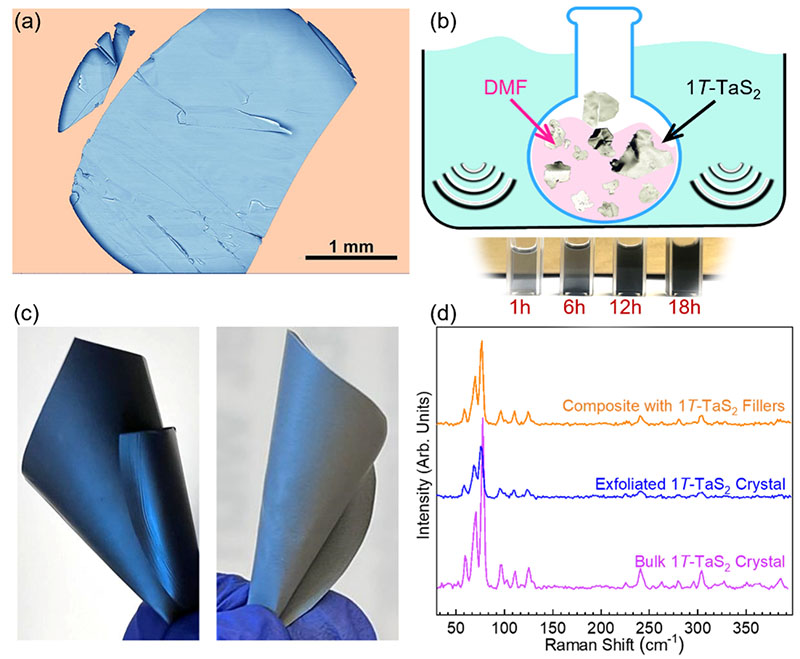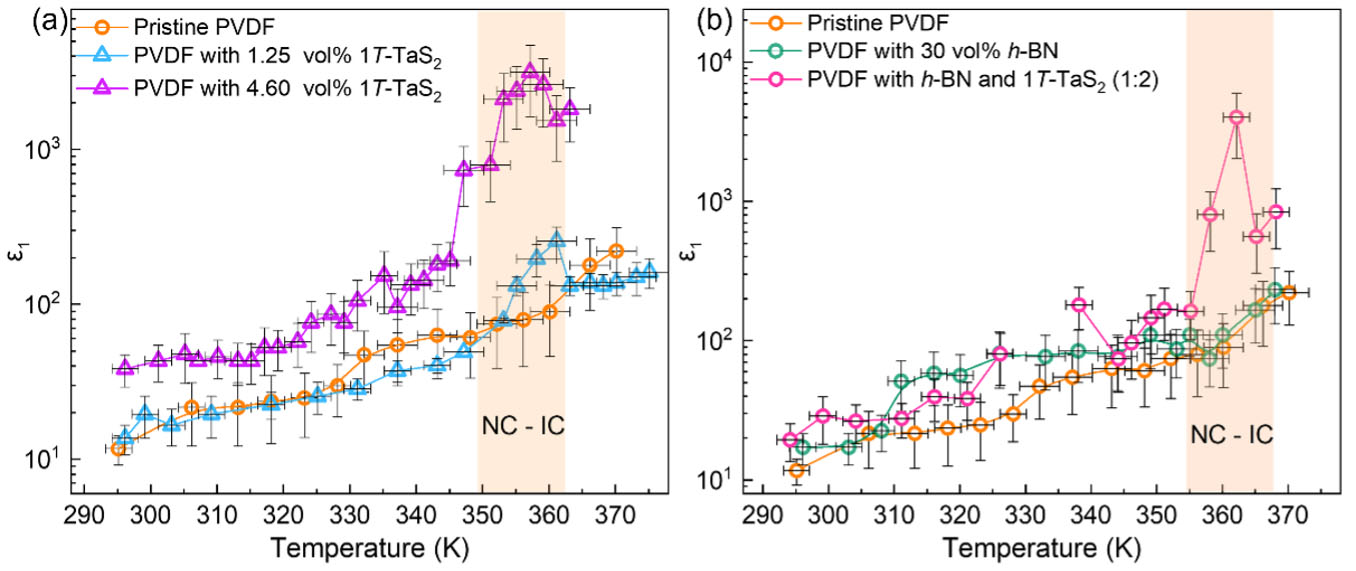| Mar 23, 2023 | |
Quantum composites - new type of composite materials with unique properties defined by quantum condensate effects |
|
| (Nanowerk Spotlight) Recent years have witnessed fast-growing interest in quantum strongly correlated materials that show unusual electronic, optical, and magnetic properties, including metal-insulator transitions, superconductivity, and charge-density-waves quantum condensate phases. Materials that reveal quantum phenomena are typically crystalline, chemically pure, and have low densities of defects since defects and disorder lead to the collapse of the quantum states. One usually does not expect quantum phenomena in disordered materials such as composites, which are mechanical mixtures of two or more materials with different properties. | |
| In recent work, a research team led by distinguished professor Alexander Balandin of the University of California – Riverside, reported on remarkable quantum composites based on polymers with fillers comprised of a van der Waals material, 1T-TaS2, that reveals multiple quantum condensate phases. | |
| Optical, thermal, and electrical characterizations indicate that the quantum states persist after harsh composite processing steps. The macroscopic properties of the composites show signatures of the transition between the charge-density-wave quantum phases even above room temperature. | |
| The quantum composites revealed unusually high dielectric constant while remaining electrically insulating. The latter opens up possibilities for the application of such unusual materials in energy storage and electronics (see Figure 1). | |
| The breakthrough results have been reported in a paper published in the journal Advanced Materials ("Quantum Composites with the Charge‐Density‐Wave Fillers"). The first two authors of the paper, Zahra Barani, and Tekwam Geremew, are Ph.D. students in the Phonon Optimized Engineered Materials (POEM) research center led by Professor Balandin. | |
 |
|
| Figure 1: Quantum composites with charge-density-wave quantum materials. (a) Scanning electron microscopy image of 1T-TaS2 crystals. (b) Illustration of the chemical exfoliation method using low-power bath sonication. (c) Flexible composite films with 1T-TaS2 fillers (left) and dual 1T-TaS2 and h-BN fillers (right). (d) Raman spectra of the bulk 1T-TaS2, exfoliated fillers, and dilute epoxy composites with 1T-TaS2 fillers at T = 93 K. The Raman spectra reveal the presence of the charge-density-wave quantum condensate phases after all processing steps. (Figure is courtesy of Zahra Barani, Fariborz Kargar, and Alexander Balandin) | |
| The dielectric constant of the composites has shown more than two orders of magnitude enhancement while the material maintains its electrically insulating properties, opening a venue for innovative applications in energy storage and electronics (see Figure 2). | |
| The results, obtained by the University of California’s research group, present a conceptually different approach for engineering the properties of materials. They also extend the application domain for the layered van der Waals materials. | |
| "It has been known for a long time that some charge-density-wave materials exhibit extraordinarily high dielectric constant," explains Balandin. "The physical mechanism of this effect has been explained and accepted by the research community. However, there was no practical utility of this property – such dielectric properties were observed in the brittle crystalline bulk samples, which are highly electrically conductive. We achieved exceptionally high dielectric constants in dilute composite samples, which are electrically insulating and flexible. The enhancement in the dielectric constant is observed above room temperature, more specifically, at the temperature of the operation of electronic devices. This is an important development, which can lead to practical applications in energy storage and energy conversion.". | |
 |
|
| Figure 2: Relative permittivity of quantum composites. (a) Dielectric constant, ε1, as a function of temperature for the pristine polymer matrix (referred to as PVDF) and polymer-based composites with low-concentration of 1T-TaS2 fillers. Note a strong enhancement of the dielectric constant at the charge-density-wave transition temperature. (b) The ε1 data for two reference samples and PVDF with binary fillers of h-BN and 1T-TaS2 demonstrates the effect of the charge-density-wave filler materials. (Figure is courtesy of Zahra Barani, Fariborz Kargar, and Alexander Balandin) (click on image to enlarge) | |
| The anomalously high dielectric permittivity of the polymer-based dilute composites with the charge-density-wave quantum fillers exceeds many previously reported composites and offers potential for a range of innovative applications related to variable capacitors, capacitive sensors, capacitors for energy storage, and reflective coatings. The temperature range at which the dielectric constant of the quantum composite drastically changes is close to the operating temperature of many electronic devices, increasing the feasibility of energy applications of such composites. | |
| Another aspect of the practicality of any new type of composite is production cost. Exfoliated van der Waals fillers can be produced via the scalable and cost-effective liquid phase exfoliation technique. It is already being used for the processing of graphene fillers for thermal interface materials. A natural extension of the concept of quantum composites with the charge-density-wave fillers would be the utilization of the one-dimensional van der Waals quantum materials that reveal the strongly correlated quantum and topological phenomena. | |
| Additional challenges that have to be dealt with in this research direction would include uniform dispersion of the high aspect ratio quasi-one-dimensional fillers and control of the polytypes of the synthesized materials. If implemented one can possibly develop novel composites with extraordinary electrical and optical properties not achievable by other means. | |
| Provided by the University of California, Riverside | |
|
Become a Spotlight guest author! Join our large and growing group of guest contributors. Have you just published a scientific paper or have other exciting developments to share with the nanotechnology community? Here is how to publish on nanowerk.com. |
|
